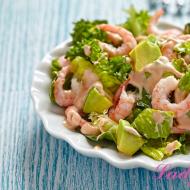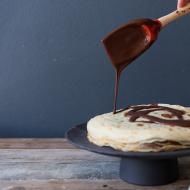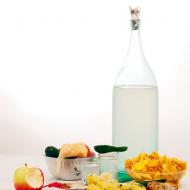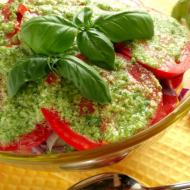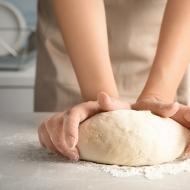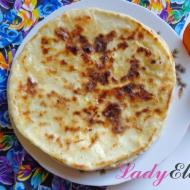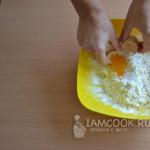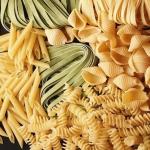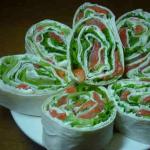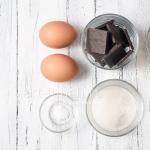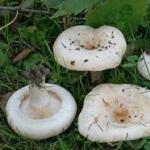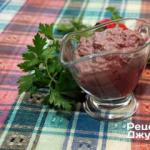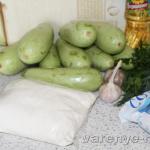
The best recipes for homemade vodka liqueurs. Folk recipes for moonshine liqueurs Traditional recipe for cranberry liqueur
The best recipes for homemade currant vodka tincturesMany people prefer homemade drinks prepared with their own hands to ready-made store-bought drinks. Tinctures and liqueurs made with natural ingredients are significantly superior to those purchased in the supermarket.
Alcohol tinctures at home are very popular, but in fact you can make them with other alcoholic drinks. The main ingredient may be:
- Alcohol or vodka;
- Wine;
- Cognac;
- Gin;
- Rum or whiskey.
If you prepare homemade tinctures using ingredients such as cognac or gin, the task becomes a little more complicated. It is necessary to fight the initial smell and taste of such alcohol or find a combination of aromas, as well as correctly select fruits and berries that, together with the main ingredient, will create the desired taste picture.
It is best to prepare tincture liqueurs at home using alcohol. It is the best solvent, and the larger its proportion in the solution, the richer and stronger the drink will be. The alcohol tincture should have a degree of at least 45, the most optimal value is 60. At this level of alcohol, the drink will be prepared much faster, and the taste will be more intense.
No need to worry about the alcohol strength. After the cooking process is completed, it can be diluted to the desired degree. If you decide to start your own production, you need to be patient. The preparation period can take from 2 weeks to 6 months, depending on the ingredients used and the desired result.
Classification of homemade alcoholic drinks
Homemade alcohol tinctures can be divided into:
- Bitters - this drink has a strength of 40 to 60% and is most often prepared on the basis of herbs, leaves, roots, seeds or berries. Spices and ground nuts are also often added to enhance the aftertaste;
- Sweet ones - their strength is reduced to 20-30%, and they are infused with apples or pears, or berries: currants and rowan berries. When preparing them, a large amount of sugar is used;
- Spicy - the number of degrees ranges from 40 to 60%. Various spices are used for infusion, and the drink itself is prepared for further distillation in a moonshine still.
Sweet alcoholic liqueurs, in turn, are classified depending on the amount of sugar in their composition:
- If up to 0.3 kg of sugar is used per 1 liter of drink, this is a tincture;
- By adding 0.3-0.4 kg of granulated sugar, you get a liqueur;
- If the amount exceeds 0.5 kg per 1 liter of drink, it is liqueur.
How to properly dilute alcohol at home
Before making a tincture from alcohol, it is necessary to determine the category of the future drink. Pure medical 96% alcohol is used only in a few recipes; in all other cases it must be properly diluted with water to the desired degree.
What to do if you don’t have an alcohol meter at home? The calculation scheme is quite simple. If you have 1 liter of 96% alcohol, this means that 1000 ml of liquid contains 960 ml of pure 100% alcohol. Let’s say to prepare the liqueur you need to use 50% vodka, that is, 1 liter of liquid should contain 500 ml of pure alcohol. To correctly calculate the amount of water required, the initial volume (1 liter) should be multiplied by the initial degree (96) and divided by the desired one (50). Thus, we get the total amount of liquid: (1x96): 50 = 1.92 liters.
It turns out that to 1 liter of medical alcohol (96%) you need to add 920 ml of water to get a solution with a strength of 50%. It is important to carry out the procedure itself correctly. When mixing, it is necessary to pour alcohol into the water, and not vice versa, and it is better to use the liquid chilled. When mixed with warm water, alcohol may become cloudy and acquire an unpleasant odor and taste.
Alcohol tinctures at home, basic recipe
To prepare alcohol tinctures at home, a wide variety of recipes are used. In order not to get lost among them, they can be divided into certain groups.
Alcohol tinctures best quick recipes
Based on the classification, three basic cooking recipes can be derived:
- Bitters recipe;
- Spicy;
- Sweet.
Basic bitter recipe
A homemade alcohol tincture is a bitters recipe that involves the use of tart berries, seeds, leaves and roots. The ingredients are placed in a glass container three-quarters full and filled with alcohol. The contents are kept for the amount of time specified in the recipe, shaking occasionally. Then it is filtered through cheesecloth, and the finished drink is infused for another couple of months.
Basic spicy recipe
To prepare the spicy tincture and liqueur, use the ingredients specified in the recipe. They are mixed with the required amount of alcohol and left for the specified time. The resulting liquid is then passed through a moonshine still to achieve the final result.
Basic recipe sweet
A similar tincture of berries with vodka is prepared according to the bitter principle. The only difference is the sugar syrup, which is mixed with the finished drink. The ingredients are heated for more thorough mixing of the components (but do not boil) and poured into bottles for storage.
Homemade vodka tinctures and liqueurs can be prepared from any desired ingredients. Most often, sweet berries or crushed fruits are used, and their combination gives excellent results and a high-quality drink.
In traditional recipes, cherries, plums or raspberries are most often used. These sweet berries make the liqueur soft and aromatic. Alcohol prepared in this way has an excellent taste and is significantly superior to the product purchased in the store.
The beauty of homemade liqueurs also lies in their strength. Some prefer a light dessert drink for a sweet table, others prefer a stronger one for a feast. Everyone can cook according to their own taste and desire.
Currants are very popular in making homemade liqueurs and liqueurs. Both black and red, it is widely used in this field. Many recipes based on this berry are prepared quite simply, and the result exceeds all expectations.
Currant liqueurs are made with vodka, alcohol, cognac and even gin. In various versions, both whole berries and squeezed juice are used for preparation. For a richer taste, cherry leaves are often added, which give the alcohol new notes and aromas.
A particularly tasty liqueur is made from white currants. Strong and aromatic, it is easy to drink and does not cause a hangover. Any recipe can be varied with spices such as cloves, cinnamon or vanilla by adding them to the syrup. Berry and citrus flavors also go well together.
Many homemade drinks can be not only tasty, but also healthy. For example, chokeberry alcohol liqueur has healing properties. The tart red berry is also used in many recipes and helps relieve colds.
Homemade wines and liqueurs, the recipes of which attract with their variety, are prepared easily and quickly if you know some secrets:
- Before placing the berries in a prepared container for infusion, professionals recommend freezing them slightly. This procedure will allow you to get more juice;
- It is not recommended to expose the bottle to sunlight; it must be stored in a dark place. Some recipes include sun infusion, which makes the drink lighter and gives it a smoky flavor;
- If berries or fruits are pre-fried, caramel is formed from fructose. Thanks to this, the taste will be more noble and aromatic;
- It is not recommended to open the lid during the preparation process, as this may introduce unwanted oxygen and bacteria into the drink.
By following these small rules, even a beginner will be able to surprise guests with good, high-quality homemade liqueur.
Bottom line
By preparing vodka tinctures at home, you can be confident in the quality of the product consumed. The taste of the drink depends only on your wishes, which opens up a huge palette of possibilities for imagination. Properly prepared homemade alcohol is easy to drink and has a pleasant fruity aroma.
Video recipe: homemade currant berry tincture
Propolis alcohol extract 10-20 percent Recipe s
For medicinal purposes, alcohol tincture of propolis is used as an external agent, for oral administration and for inhalation. Depending on the nature and method of application, extracts of various concentrations are prepared - 5%, 10%, 20%, 40%, 80%. The alcohol strength can be from 70° to 96°. When preparing the extract, the principle of the ratio of parts of propolis and parts of alcohol by weight is often used. Errors in propolis concentration of a few percent are not significant. Extracts of weak concentration (5-10%) have less pharmacological activity, extracts of 20-30% concentration have greater activity, but they also irritate tissues more strongly. It is better to use 15% extracts.
Alcohol tincture of propolis 10-20 percent
Recipes
For medicinal purposes alcohol tincture of propolis used as an external agent, for oral administration and for inhalation. Depending on the nature and method of application, extracts of various concentrations are prepared - 5%, 10%, 20%, 40%, 80%. The alcohol strength can be from 70° to 96°. When preparing the extract, the principle of the ratio of parts of propolis and parts of alcohol by weight is often used. Errors in propolis concentration of a few percent are not significant. Extracts of weak concentration (5-10%) have less pharmacological activity, extracts of 20-30% concentration have greater activity, but they also irritate tissues more strongly. It is better to use 15% extracts.
Please note that you should not strive for high alcohol concentrations of propolis; you should use what is recommended in the recipe. Extraction is carried out in a dark glass vessel. Weighed and crushed propolis is poured with alcohol in the required volume and mixed thoroughly. The jar is placed in a dark place for 3 days at room temperature, shaking it occasionally. Upon completion of extraction, the solution is left for 10 hours in the refrigerator (5-8°C) and filtered through filter paper. The sediment on the paper is weighed and subtracted from the original weight of propolis. Thus, the weight of propolis dissolved in alcohol is accurately determined, and the available concentration is calculated from it.
 Example. To obtain a 10% alcohol solution of propolis, take 90 ml of alcohol and 15 g of propolis. After its dissolution, 4 g remained in the sediment on the filter paper (wax, pollen, wood chips). Consequently, 11 g of propolis dissolved in 90 ml of alcohol. To obtain a 10% solution, add 9 ml of alcohol to the vessel.
Example. To obtain a 10% alcohol solution of propolis, take 90 ml of alcohol and 15 g of propolis. After its dissolution, 4 g remained in the sediment on the filter paper (wax, pollen, wood chips). Consequently, 11 g of propolis dissolved in 90 ml of alcohol. To obtain a 10% solution, add 9 ml of alcohol to the vessel.
To obtain 20% propolis tincture you need to take 20g. propolis and 100 ml. 70 proof alcohol. To prepare a 10% tincture, take 10g. propolis per 100 ml. alcohol
Cut the pre-cooled propolis or, better yet, grate it, put it in a bottle or jar with alcohol, close it and leave for 14 days in a dark place at room temperature, shaking the container 2-3 times a day. Then strain and refrigerate. This product will last for several years.
You will also need a glass jar and a metal lid.
Method for preparing homemade tincture from bee glue (propolis):
Recipe for making propolis tincture based on vodka at home

If it is not possible to purchase ethyl alcohol, replace it with high-quality vodka. Its dissolving properties will be weaker, but sufficient to extract the maximum of useful substances from the bond. Adding pollen is optional.
What you will need:
- propolis – 50 g;
- vodka – 500 ml;
- flower pollen – 1 tsp.
How to make:
- Grate the propolis or finely chop it with a knife. You can also use the freezing method described in the first recipe to grind the bonds.
- Take 1 tsp. pollen. It is recommended to use dark colored peas.
- Place crushed propolis in a jar or other glass container.
- Fill it with vodka.
- Add pollen.
- Close the jar tightly with the lid. To prevent liquid from leaking out when shaking vigorously, you can put a piece of cling film under the lid.
- Shake for 2-3 minutes.
- Cover the jar with a dark cloth and place it in a visible place for 15 days. Shake every day.
- Filter and bottle. If medications were previously stored in the container, it must be thoroughly rinsed from the inside and dried.
The finished tincture is transparent and rich brown in color.
How to properly store medicinal tincture?
The healing properties of propolis extract last up to 3-4 years, provided proper storage
Keep the tincture in a dry place, protected from the sun, in a tightly closed bottle. It is advisable to use tinted glass containers. It is better to store the product at room temperature, for example, in a pantry or medicine drawer. It is not recommended to put it in the refrigerator.
How to use this natural medicine
- For treating cuts and abrasions. Propolis and medicines based on it accelerate healing. For shallow damage to the skin, you can treat the wound directly. If the wound is serious (open), it is recommended to lubricate only the area of skin around it.
- For gargling with sore throats and acute respiratory infections. Mix 1 tsp. alcohol solution with 100 ml of warm boiled water. Gargle and gargle 3 times a day.
- For the treatment of gastritis and other gastrointestinal diseases. Mix 1 tsp. tinctures with 100 ml of water or milk. Take 1 hour before meals in the morning and evening.
It is not advisable to take the drug in its pure form, as this can lead to a burn to the esophagus.
- For the treatment of “colds” (herpes) on the lips. Lubricate the affected area with a cotton swab. Symptoms of the disease subside already on the 2nd day.
- For colds, it is used as an additive to tea. For 200-250 ml of boiling water, take 1 tsp. black leaf tea. Brew it and cool to about 70 degrees. Add 1 tsp. tinctures of propolis and bee honey. Stir. Drink in small sips.
- For fungal diseases of the skin and nail plates, the medicine is applied to cotton wool and generously applied to the affected areas. The duration of treatment is until the manifestations of the disease disappear.
The tincture, like other propolis-based preparations, cannot be consumed daily for a month. Long-term continuous use can lead to inhibition of the body's protective functions. Therefore, this remedy is suitable for the symptomatic treatment of a wide range of diseases.
Treatment with the drug is also prohibited if allergic reactions to its components occur and there are contraindications to drinking alcohol.
In folk medicine, propolis is a proven remedy for treating diseases. Its effectiveness has been proven by official medicine, so the use of Propolis 20 is indicated both in the treatment of hemorrhoids and other internal and external diseases.
The drug Propolis 20 is indicated both in the treatment of hemorrhoids and other internal and external diseases
Composition and effect of propolis for hemorrhoids
The medicinal product contains only a natural bee product (propolis) and ethanol. Propolis is a substance produced by bees from plant resins. It also contains pollen and wax, essential oils and beebread, useful acids, enzymes and vitamins. All these substances (of which there are several hundred in the product) have a positive effect on the body and help cope with many internal and external diseases.
The drug has anti-inflammatory, antimicrobial, wound-healing, antioxidant properties, increases the body's defenses and improves tissue regeneration.
Due to this, taking propolis orally is indicated, including for hemorrhoids. Propolis strengthens veins, increases their tone and prevents stagnation of venous blood. At the same time, external application of alcohol infusion to hemorrhoids is not practiced due to the likelihood of causing irritation and burns of the mucous membrane. Ointment with propolis or special suppositories are used locally.

Release form
The drug is produced by the pharmaceutical industry in the form of a liquid tincture prepared with alcohol. The liquid is in a glass container with a volume of 100 ml. The number 20 in the name of the drug indicates the ratio of alcohol to the substance that is dissolved in it. To be more precise, 20 g of active substance is dissolved in 100 ml of alcohol. That is, the bottle contains 20% propolis in 100% ethanol alcohol. The liquid is brown in color, transparent, has a characteristic odor and bitter taste. During storage, sediment may form.
Pharmacological properties of Propolis 20
Propolis has many beneficial properties, most of which are recognized by official medicine.
The drug has a multifaceted pharmacological effect; Among its properties:
- antimicrobial;
- anti-inflammatory;
- wound healing;
- regenerating;
- antispasmodic;
- antitoxic;
- venotonic;
- antioxidant;
- soothing;
- pain reliever;
- diuretic;
- hepatoprotective.

Pharmacodynamics
Preparations based on “bee glue” have good pharmacodynamic properties. Studies that were conducted to test the effect of the drug on patients showed high reproducibility of the results, that is, the therapeutic effect is sustainable. By interacting with cell membranes, “bee glue” has a tonic and stimulating effect on them, which is responsible for the effect of strengthening the body.
Pharmacokinetics
Propolis is characterized by good digestibility and high absorption through the gastrointestinal tract. Excretion (removal) of the drug occurs in the urine. The drug does not have a negative effect on the excretory system and is well accepted by people who do not have individual intolerance to its components.

What does it help with?
The tincture is taken for:
- diseases of the ENT organs (tonsillitis, tonsillitis, chronic pharyngitis, otitis media) and upper respiratory tract (bronchitis, tracheitis);
- dermatological problems (fungus);
- disorders of the gastrointestinal tract (peptic ulcer, gastritis, cholecystitis, colitis).
The drug is also used as an antithrombotic and sedative.
It is appropriate to use the extract for muscle and joint pain, to reduce blood pressure and normalize blood sugar levels.
The drug shows itself perfectly in the treatment of wounds and inflammation of mucous tissues.
Propolis 20 for hemorrhoids
To speed up healing, tissue regeneration and reduce inflammation, propolis extract is taken orally and, at the same time, local treatment is carried out using special suppositories or suppositories that relieve itching and eliminate discomfort.
Chronic
The chronic course of the disease requires observation by a physician and the use of the drug on a long-term basis. Diseases that are protracted do not respond well to treatment, much less with natural medications, so you need to be patient. You will need to take the tincture for at least 20 days, 15-20 drops per dose (the medicine is taken 2-3 times a day, diluted in 50 ml of water). After this period, take a break for 2 weeks and then resume taking it again.
During exacerbation
In case of exacerbation, the dose of the drug can be increased to 30-40 drops per dose. Using the maximum permissible doses of the medicine stimulates the body's defenses and accelerates cell regeneration. Take the drug 3 times a day; the course of treatment is 2 weeks, after which they take a break. To speed up treatment, it is recommended to combine internal and external drugs.
Haemorrhoids
How to make candles from propolis
How to make a tincture
You can prepare an alcoholic extract yourself at home. The concentration of the active substance can range from 5 to 40%. The therapeutic effect of the saturated extract will be higher, but its irritating effect will also increase. It is better to use a percentage ratio of 1:10 to 1:20. To prepare, take high-quality medical alcohol and natural propolis. The latter should be placed in the refrigerator for 1-2 hours, and then grated on a coarse grater.
The crushed product (10-20 g) is placed in a glass container and filled with alcohol (100 ml). It is better to use a dark glass container. It is tightly sealed and shaken to dissolve solid particles into the liquid. Then place it in a cool, dark place. The tincture must be infused for 10 days, while shaking 1-2 times daily. Then the liquid is filtered through cheesecloth and stored. The tincture can be stored in a dark, cool place for up to 3-4 years.

How to use Propolis 20
The remedy is intended for oral administration and external use (applied to the skin), in addition, for rinsing the mouth and throat. Before taking the drug, dilute it in boiled water or milk. When diluted with water, the drug acquires a milky tint and loses transparency. This is a normal reaction and should not cause concern. The emulsion is taken 30 minutes before meals 2-3 times a day.
Externally, the aqueous solution is used several times a day to rinse or applied to affected areas of the skin.
Contraindications
Propolis is well tolerated. Allergic reactions are occasionally observed. Most often, intolerance to the tincture occurs in those people who have been diagnosed with an allergy to honey, pollen, bee bread and other bee products.

Those people who have an increased sensitivity of the body to bee venom (severe swelling from bee stings) should use the drug with caution. Contraindications include kidney disease; Prescribed with caution for diseases of the stomach and liver. In addition, the tincture is contraindicated for bleeding and acute eczema.
Side effects
When taking the drug, hypersensitivity reactions to the components of the drug may occasionally occur: skin rashes, urticaria, itching, redness of the skin.
If allergic reactions occur, stop taking the drug.
Overdose
No cases of overdose have been reported.
Special instructions
The drug has no warnings for use by people whose work requires focus and concentration.

During pregnancy and lactation
Pregnancy and lactation are not a contraindication to taking the drug. It is recommended to only avoid applying the tincture to the chest area during feeding and immediately before it.
Use in childhood
The tincture can be given to children over 3 years of age. For a child, the dosage is calculated as follows: 1 year of a child’s life = 1/20 of the dosage intended for an adult.
Drug interactions
There are no reports of interactions between the drug and other drugs.
Analogues
An analogue of the drug can be an aqueous solution of propolis, propolis in suppositories and propolis in lozenges.
The following preparations containing propolis will help in the treatment of hemorrhoids:
- Propolis DN (additionally contains wool wax);
- Prostopin (propolis, pollen, royal jelly, beebread and mountain honey);
- Hemo-Pro (herbal extracts, sea buckthorn oil, lake mud, rue oil);
- Adonis (propolis, sea buckthorn oil);
- Propolis D (propolis, dimexide);
Terms and conditions of storage
The shelf life of the pharmaceutical tincture is 2 years. Homemade can be stored for up to 3-4 years in a cool, dark place.
Propolis. How to prepare and use.
Due to the availability of ingredients, speed of preparation and rich taste, cranberry liqueurs are deservedly considered one of the best alcoholic drinks prepared at home. We will look at two of the best recipes, based on which even beginners can create stunning alcoholic masterpieces.
Any ripe berries are suitable for cranberry liqueurs - fresh or frozen, which are sold in stores almost all year round. In the second case, it is better to make the drink according to the second recipe, since store-bought fruits do not ferment well, which requires separate preparation of starter cultures.
Classic cranberry liqueur recipe
Real liqueurs are prepared by natural fermentation without vodka or other alcohol, only sugar is added. They are not as strong as tinctures, but they better retain the aroma and taste of the original raw materials. To increase the strength at the last stage, you can pour a little alcohol or vodka into the already prepared liqueur.
Ingredients:
- cranberries – 500 grams;
- water – 0.5 liters;
- sugar – 0.7 kg.
Preparation:
1. Separate unwashed cranberries from the bunches, mash until smooth and place in a container with a wide neck. There is wild yeast on the surface of the berries, so cranberries should not be washed, otherwise they may not ferment.
2. Add water, sugar and mix well.
3. Bandage the neck with gauze and place the container for 3-5 days in a dark room with a temperature of 18-25°C. Stir once a day with a clean hand or a wooden stick.
If fermentation has not started, you should add 100 grams of unwashed raisins or make a starter from fruit, for example, apples.
4. If signs of fermentation appear (hissing, foam near the surface, sour smell), install a water seal on the container or put on a medical glove with a small hole in the finger.
5. After 30-40 days, the water seal will stop gurgling (the glove will deflate), which means that fermentation is over and it’s time to move on to the next stage.
6. Drain the finished cranberry liqueur from the sediment, filter through gauze and cotton wool, pour into bottles, then cap tightly.
7. Before use, keep in the refrigerator (basement) for 30-40 days.

 Classic cranberry liqueur
Classic cranberry liqueur If desired, the strength of the drink (initial 12-14 degrees) can be increased by adding 10-15% alcohol (vodka) of the volume of the liqueur.
Store in a cool, dark place (10-16°C). Shelf life up to 2 years.
Recipe for cranberry liqueur with vodka
This drink is made faster and easier than the previous one. True, it is more like cranberry tincture than a classic liqueur.
Ingredients:
- cranberries – 0.5 kg;
- vodka (moonshine, alcohol 40-45%) – 1 liter;
- water – 1 liter;
- sugar – 1 kg;
- dry mint – 2-3 leaves (optional);
- chopped galangal root (cinquefoil) - 1 teaspoon (optional).
Sugar can be replaced with honey in the same proportions. If moonshine is used, it must be as odor free as possible, otherwise the aroma of the liqueur will be worse.
Preparation:
1. Separate the berries from the stalks, wash well and crush with a wooden rolling pin (grind with a meat grinder or blender) until smooth.
2. Add mint and galangal, pour vodka.
3. Mix well, close the lid tightly and put the jar in a dark place at room temperature for 10-14 days.
4. On the last day of infusion, mix water and sugar, bring the mixture to a boil, then simmer over low heat for 4-5 minutes, skimming off the foam. Cool the finished syrup to room temperature.
5. Mix the syrup with cranberry infusion, close tightly and keep in a dark, warm place for 7-10 days.
6. Filter the finished liqueur through 2-3 layers of gauze and cotton wool.

 Cranberry liqueur with vodka
Cranberry liqueur with vodka Store in an airtight container in a cool place out of direct sunlight. The shelf life of homemade cranberry liqueur is 3 years. The result is a drink with a strength of 14-16 degrees with a perfectly balanced taste and a subtle forest aroma.

